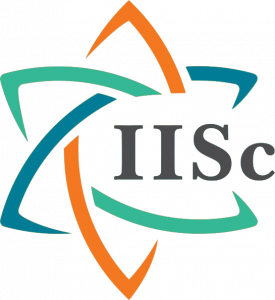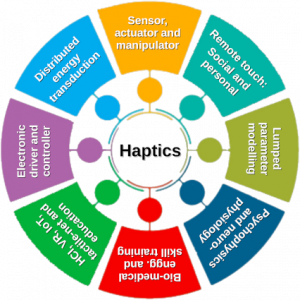



Centre for Product Design and Manufacturing Indian Institute of Science, Bangalore-560012
InSPIRE Lab Vision Statement
InSPIRE Lab Vision Statement
The focus of the InSPIRE Lab is in Innovation Synthesis and Prototyping for Interdisciplinary Research and Engineering in haptics and other fields. Interdisciplinary research needs a team of people who have core expertise in different domains represented by the central spire of the logo of the lab. To be a successful interdisciplinary researcher the domain experts need to have a broader understanding of the other domains so that they can apply their core expertise efficiently and judiciously for the interdisciplinary research and engineering. This expansion of basic knowledge of different domains is represented by the expanding spire at the base of the central spire of the logo. As the time passes researchers of this lab supposed to be making dent in their core domain of expertise as well as broadening their understanding towards associated domains of their interdisciplinary works.
The two spires present on two sides of the lab name are revolving in opposite directions indicating that lab members may disagree on some ideas at some points but they come to a
solution at certain point to fulfill the final objective of the interdisciplinary work. Two different colour of the spires indicate that lab members have different core expertise and at the same
time the two different shades of each central spire indicate that contribution done by a member in the core domain could be viewed by different people from different angles. In any
case, height and breadth both matters to be a successful interdisciplinary researcher or engineer.
The presence of two core spire also indicates that as time passes and knowledge base expands, an interdisciplinary researcher and engineer sometime develops multiple core
domains or shifts the core domain of expertise. However, it is not desirable to attempt shifting or spawning a core expertise very frequently. That is why the central spires are maintaining
sufficient distance by staying at two opposite sides of the InSPIRE Lab. Hope the InSPIRE Lab will be inspiring all its lab members and others through out its existences.
Haptics ↔ Distributed Transduction ↔ Bio-Medical
Haptics is an interdisciplinary field of study related to touch sensation. Among the five major sensation (touch, taste, smell, hearing and sight) touch is the most robust and fundamental creating the basis of the reality. Therefore, creating different type of high fidelity artificial touch stimuli is still a topic of research and extremely challenging. However, modern technological advancement related to sensors, actuators, electronics, smart-materials and computers have created an opportunity for us to explore the fundamentals and applications of haptics deeper and broader.
Over the past few decades, due to technological advancement, the artificial sensors and transducers achieved increased sensitivity and SNR along with decreased power consumption and size. This inherently led to the development of low power and miniaturized actuator systems which can function in association with those advanced sensors and transducers. This reduction of actuator size and power consumption is well supported by increase in efficiency of the actuator and electronic driver systems for them. This advancement was sufficient to bring the audio-visual technologies to next level over past two decades. However, Haptic technologies could not advanced much mostly because of the limitations imposed by the fundamental physics behind haptics, such as:
Therefore InSPIRE Lab will focus mostly on fundamental research on haptics which could lead to technological development towards high-fidelity haptic stimulus generation. This certainly involves research in the domain of human haptics and distributed energy systems. Research in distributed energy system has obvious allied applications in the present day world moving towards the non-conventional energy harvesting. At present haptics has a promising application in bio-medical field. Its application is emerging in the field of virtual reality (VR), industrial training and manufacturing, education technologies and IoT (tactile- internet) to name a few. Hence, InSPIRE Lab will be open for contributing in those fields. Besides applied research the core research activity will cover the field of electronics and instrumentation engineering, physiology and psychology at macro and micro level. One significant activity of the lab will be the experimentation and modeling of biological haptic systems.
The following are the three applied research project that the InSPIRE Lab will focus for next five years.



